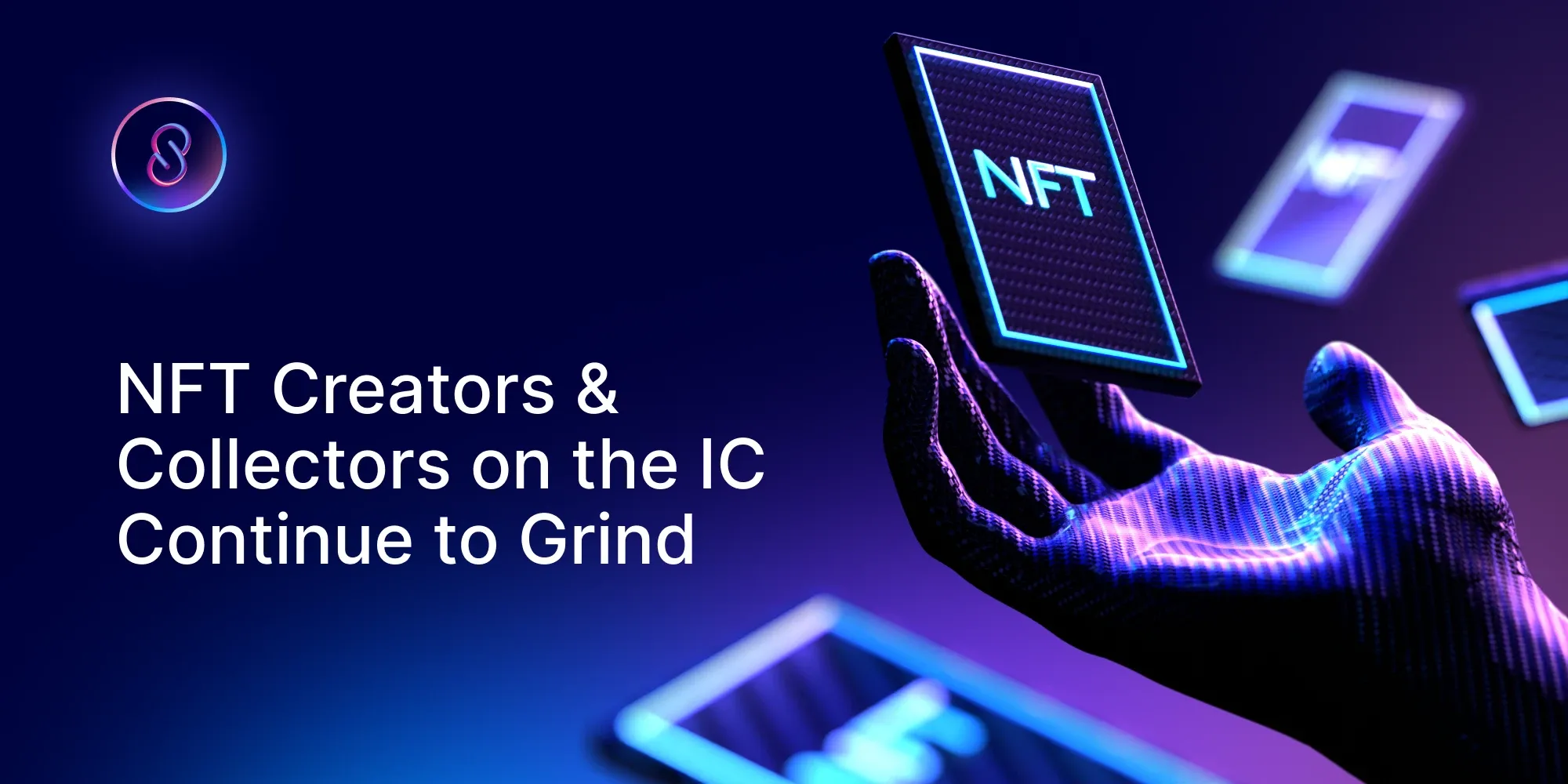The Art of Social Fi: Because Even Bull Markets Need More Followers
We explore how crypto and decentralization may impact social platforms, content creation, censorship, and privacy.

Today, social media does not always benefit everyone. Some users, creators, and big platforms do not always share the same goals. But when cryptocurrency integrates with social media, a profound shift in alignment occurs.
Traditional social media changes as a new trend called SocialFi (Social Finance) emerges, allowing users to earn crypto tokens for creating, curating, and sharing content. In this article, we will explore what SocialFi is, how it works, and who is driving this decentralized social media movement.
What Exactly is SocialFi?
SocialFi represents a world where blockchain meets social media, allowing users to earn cryptocurrency rewards. On these new generation platforms, users can accumulate tokens for activities like posting, commenting, curating content, and engaging in other forms of participation.
Its goal is to present an alternative to centralized social networks such as Facebook or X (previously known as Twitter). Their main focus lies in giving creators increased autonomy and ownership.
The platform incorporates and combines social media and blockchain technology, and with it, creators can launch their own unique social tokens, effectively decentralizing social media.
SocialFi gives content creators more independence and control over their work. They can get ownership of their content and generate revenue through new methods created by blockchain such as the use of Non-fungible Tokens - NFTs.

Unlike traditional centralized social media networks, SocialFi aspires towards complete decentralization of power, thereby protecting authors and users from issues such as shadowbanning, censorship, and unexpected account deletion.
How Does SocialFi Work?
On SocialFi platforms, users synchronize their crypto wallets with their accounts, which can be made by phone number, X account, or Google account. Their engagement on the platform translates into acquiring governance tokens or creator coins. These tokens give them the right to vote and claim their stake in the revenue generated within the platform's ecosystem. We take a look at some of the features of Social Finance protocols.
User Empowerment
SocialFi aims to give users control over their data and online presence by leveraging blockchain's decentralized nature. Users can have ownership and control over their personal information, social connections, and content.
Transparency and Trust
Blockchain technology provides transparency and immutability, helping combat fake news, misinformation, and centralized censorship. With blockchain, users can verify the authenticity and origin of content, ensuring a more trustworthy social media environment. Although we hope.
Peer-to-Peer Interactions
Decentralized social networks are built on blockchain technology and operate without central authority or control. They facilitate direct interactions between users without the need for intermediaries or "middlemen." Users can connect, communicate, and share content directly with one another, fostering a more peer-to-peer, community-driven social experience. Without the fear of paying more than necessary fees.
Content Monetization
For creators, SocialFi provides new monetization opportunities because they can earn tokens directly from their followers and fans and literally have a stake in the growth and success of the platform.
🪙 Token economy: Platforms typically have their own native tokens, which can be used for various purposes within the ecosystem. This token can represent value, enable transactions, and incentivize users.
🎁 Rewards and gamification: Users can earn tokens and rewards for activities like creating content, sharing, commenting, liking, and participating in community initiatives. This gamification encourages active participation, fosters community engagement, and rewards users for their contributions.
Participants can thus receive direct financial rewards for their content, engagements, and contributions, allowing them to be more independent and financially rewarded for their work. Everyone with a computer and an account can earn if they provide value to the platform.
The Future Looks Decentralized
SocialFi is a paradigm leap in social media. Decentralized systems empower users rather than big tech companies, which have a reputation for pushing certain agendas on populations.

While still early, SocialFi could transform how creators make money and communities form online. The technology needs improvement for mainstream adoption, but the core promise of an open, transparent social media economy resonates more each day.
Also, while almost all who are into crypto are in it for the money...I mean, in it for the tech. The breakthrough has to come from the utility of blockchain technology. Many will want to use cryptocurrency and their decentralized apps in their everyday lives if it provides real-world use cases built on blockchain.
With nearly 5 billion social media users, platforms like Facebook, Instagram, and TikTok reach massive audiences. SocialFi can tap into these networks and user bases for rapid growth. The vast size of the social media market presents a huge opportunity for social token platforms. If the herd is coming, it can be in the blink of an eye.
Comparison: Centralized vs. Decentralized Social Media
In this digital age, social media is integral to our lives, connecting us with friends, family, and the world. Information such as pictures, thoughts and even propaganda can be spread and read by millions in a matter of minutes. However, as technology takes new levels, the debate on the necessary evil of centralized social media and the need for more decentralized platforms gains traction.
Let's explore the key differences, advantages, and potential implications in re-shaping our digital interactions.
Centralized Social Media
Centralized platforms like Facebook, X (Twitter), Instagram, TikTok and YouTube act as intermediaries, managing and storing vast amounts of user data on centralized servers. Through algorithms, they curate content and control what we see by running algorithms in certain ways, punishing content against the guidelines and rewarding narrative-confirming content.
Advantages
📱 User-friendly, accessible interfaces
🌍 Massive established user bases
🌐 Convenient content moderation
Disadvantages
🕵️♀️ Privacy concerns over user data
🔄 Algorithmic manipulation affecting information flow
🧯 Susceptible to single points of failure
Decentralized Social Media
The newly decentralized platforms launch a new era of empowered social media, powered by blockchain technology. Instead of relying on centralized servers, data is dispersed across a network of nodes, and instead of curating content they just exist without any agenda and with verifiable transparency and user control.
Advantages
📜 Data Ownership - users retain full control
🔐 Transparency and trust through blockchain
🗳️ Community governance gives users a voice in decision-making
Disadvantages
📆 User experience challenges are still new
📉 Limited adoption compared to centralized platforms
🧐 Concept complexity for non-tech-savvy users
Decentralized Social Media Projects Showcased at Dfinity Supernova Hackathon
On May 10th, 2022, the Dfinity Supernova hackathon played host to a multitude of exciting decentralized social media projects in the SocialFi category. These projects aspire to create community-owned social platforms infused with tokenization and built on Dfinity. We take a look at some promising prospects.
Conshax - Podcast platform with token incentives
Conshax facilitates podcast monetization through fungible tokens, representing revenue shares from episodes. Listeners purchase tokens to partake in earnings, while the lightning network facilitates micropayment tips. Very promising for the average podcast enjoyooor.
CrowdEats - P2P review platform with crypto rewards
CrowdEats reimagines online restaurant reviews by introducing blockchain-based incentives alignment. The platform compensates users for crafting high-quality reviews. Then the decentralized community votes on submitted reviews. A new way to integrate social food sharing with links to trusted reviews.
Mora - Creator-owned content management protocol
Mora strongly emphasizes creators' control over content and data ownership. Creators can publish across various apps from their Mora account and directly receive earnings this way.
Kontribute - Publishing and monetizing stories via NFTs
Kontribute empowers writers to publish stories and sell them as NFTs. The platform also features an in-platform NFT marketplace.
Signals - Geolocation-based connections and events
Signals facilitate the broadcasting of different signals on a map to foster local connections and the organization of events. It functions as a decentralized autonomous organization, also known as a DAO.
Conclusion
The ongoing mini-hype and shift to decentralized social finance centers on user experience, privacy, and governance. Three keywords that are getting lost in the centralized platforms we grew up with. The newly launched decentralized counterparts prioritize user ownership and transparency. Leveling the playing field for anyone who wants to find an alternative.
If applied thoughtfully, the blockchain movement's ethos of decentralization and transparency could bring much-needed change to social media. However, as in crypto, one thing is certain - the reckless financial speculation could distract the majority from the true innovative products. And that our digital future requires evolving social incentives, not just creating crypto casino games.

Connect with Bitfinity Network
Bitfinity Wallet | Bitfinity Network | Twitter | Telegram | Discord | Github

*Disclaimer: While every effort is made on this website to provide accurate information, any opinions expressed or information disseminated do not necessarily reflect the views of Bitfinity itself.




Comments ()